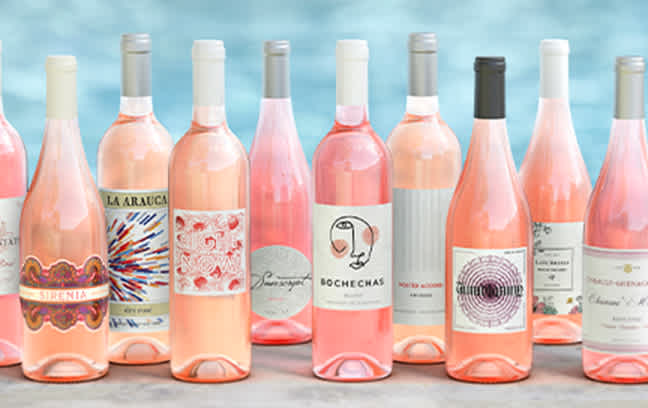
Over the past decade, rosé wines have gone through an image overhaul like no other wine category in history. The chilled glasses of pink wine that were once relegated to summers in the south of France on the border with Italy, or less glamorously, backyard White Zinfandel (sometimes referred to as "blush" where winemakers mix red wine and white wine together), have come back into fashion and are here to stay. You can find sparkling rosé champagne, Provençal rosés, deep Sangiovese-based Italian rosés, and rich Spanish Tempranillo Rosado, among many others. So, why reach for a forgettable Chardonnay when you could have something a little more fun?
What are the best rosé wines?
Rosé exists in the sweet spot between white and red wines, somewhere between a refreshing crispness of a Sauvignon Blanc with the red fruit notes of a Pinot Noir. It can be made with any red grape. There are Grenache rosés, Syrah rosés, Cinsault rosés, Cabernet Sauvignon rosés, and Merlot rosés. There are dry rosés, sweet rosés, and sparkling rosés. There are French rosés, but rosés also come from Italy, Austria, Spain, California, and almost every other wine region on Earth. The styles are endless, but the template for classic and fruity but still serious comes from the Côtes de Provence, where almost 80% of the wine made is rosé.
What are the tasting notes of rosé wine?
Its sunny disposition and alluring pale pink color are the result of skin contact or maceration. This primary rosé production method allows the skins of red grape skins to impart a bit of color and flavor without over-saturating the raw juice. Depending on the types of grapes used and the amount of contact time, the resulting rosés can range from pale peach to deep fuchsia, with a garden of tasting notes from rose petals to watermelon, ripe raspberries and bright, zesty citrus. So at the end of this, what are the best rosés? One of the beautiful things about rosé is its festive and easy-drinking profile, so the best rosé is likely the one you are opening next.
Want to learn more about rosé wine?
Want to learn more about rosé? Check out Firstleaf’s Ultimate Guide to Rosé.
